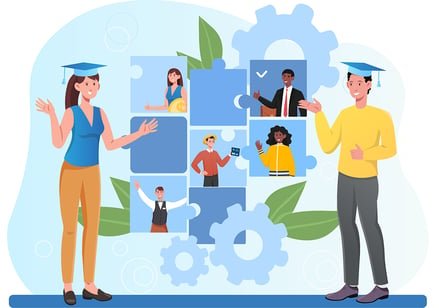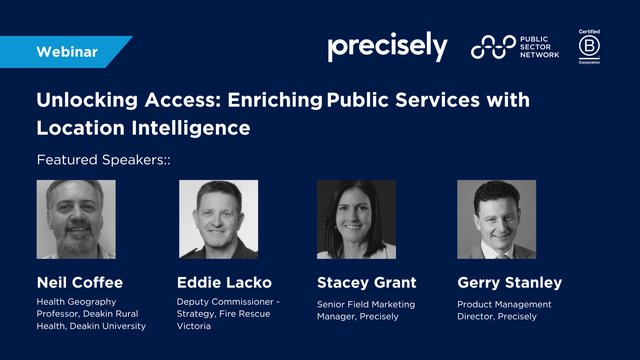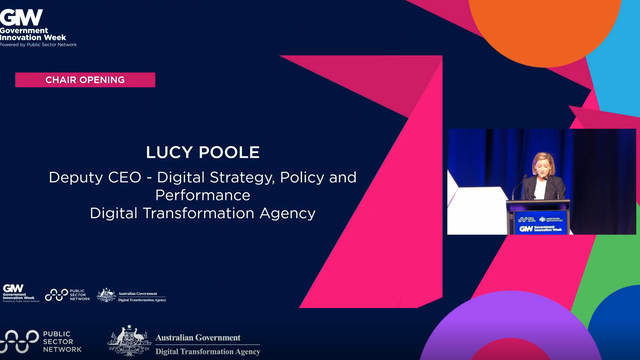

Personal evidence and the skills they recognise are game changers for learners to earners and those seeking to progress their careers. But the greatest benefit by far, is that they provide a fuller picture to educators, learners and employers, in a way that is transparent, contextualised and relevant. Let’s look at why personal evidence is on the rise and its impacts on the stakeholders of the skills ecosystem.
Not that long ago, when a learner needed to present an official transcript to an employer or another educational institution, they could request a sealed transcript be mailed to them. Learners often didn’t know what their transcripts really showed. They could tell you what grade they received, but identify few of the skills commonly seen in job descriptions.
Employers would fill job postings with education and experience requirements and rarely mention the actual skills needed for the position. A degree or certificate did not always align with those skills, and employers and learners alike became increasingly frustrated.
On the educator’s side, institutions did sincerely want successful outcomes for learners, and that success was sometimes, but not always, measured in terms of employment. But the disparity between education and employment increasingly highlighted a disconnect. And then something shifted.
Suddenly the world found itself with serious skills gaps. Employees, dissatisfied with their jobs or careers began what would be known as the Great Resignation. This movement was already in motion, although exacerbated by the pandemic.
The workforce became far more mobile. The average tenure of an employee at a position dropped from over four years to just under that, and the average college graduate stayed at the first job they took after graduation for a mere 18 months.
A key to enabling mobility are personal evidence records, that are skills-based, richer, and help learners to showcase their skills – even those learned in non-traditional settings – to sit alongside their formal education and employment experience.
Learners aren’t the only ones who benefit. Educators and employers get a fuller picture from evidence that is personal to the learner, digital, portable, verifiable and that aligns with the skills industries are actually looking for.
How Important is Personal Evidence?
Consider for a moment the following scenario: a programmer applies for a position to develop an application in a certain language for a specific application using something called DevSecOps:
- The learner can present a personal evidence record that shows several things, including their knowledge of the language required, education, certifications, or digital badges that certify programming skills, artefacts to showcase other similar projects they might have worked on including results, and links to Rich Skills Descriptors (RSDs) that give definition and context to their skills.
- An employer can view and verify evidence that tells them more about the candidate and their skills than a resume and transcripts could. They can verify (through digital credentials that adhere to open badge standards) the skills the candidate says they have and can better match the individual for the position they are hiring for.
- The educator, the provider of the digital credential, is assured of the employability of the learner for specific positions based on the skills they have developed through their learning. Employment outcomes are then better not only numerically but qualitatively as well. Additionally, they can prove that the curriculum delivers on the skills it is designed to teach.
While all of these are important, one of the most vital is the level of confidence the learner has in the evidence they are providing. They know what the evidence says, the skills it showcases, and they can better articulate what they bring to the table. Research we conducted in 2021, showed that only 33% of learners felt confident voicing their skills during their first job search. In a research project with multiple cross-sector international partners being released next month, we found that 76% of learners felt ‘somewhat’ or ‘significantly more’ confident talking about their skills after having received a Credentialate personal evidence record.
As the research outlined above shows, personal evidence records and the skills evidence they provide are game changers for those transitioning from learner to earner or to wanting to progress in their careers. For them to have the desired impact though, they must be accepted by all stakeholders.
How Widely are Personal Evidence Records Being Accepted?
It is clear that both high school and higher education institutions want to do a better job of surfacing skills and providing evidence of personal accomplishments. Some programs that provide excellent examples include:
- Mastery Transcript Consortium is a program where 368 American high schools are collaborating to create a digital high school transcript enabling learners to share their unique strengths, abilities, interests, and skills along with their job histories
- The PIVOT Project, led by IMS Global in partnership with the OESIS Network which consists of over 600 independent schools, enables interoperable records that lead to the next generation of transcripts.
- Greenlight Credentials is working in Texas to create a place on the blockchain for both transcripts and other skills credentials, although these are at the moment expensive to create and maintain due to the computing power required.
At Edalex, Credentialate creates personal evidence records unique to each learner that include several sections, such as:
- Open Badge verification – viewers can initiate a verification process with the server that hosts the original badge metadata to verify that it is genuine
- Personal qualitative and quantitative Evidence – evidence that clearly shows the learner’s level of achievement including a percentage score and a description of what skills level the learner has been assessed on
- Framework alignments – how do the skills and competencies the learner possesses align with education, industry or other frameworks? Details of alignments are displayed and link to the framework detail so employers can more easily understand the learner’s skill level and how it matches to their job needs
- Share options – so that learners can digitally access and share their personal evidence record where and with whom they wish
- Skills descriptor link – linking to Rich skills descriptors (RSD) or additional information that provides a specific definition of a skill and gives further context and relevance
- Embedded artefacts – personal artefacts can be uploaded and stored in the form of documents, videos, images or links

The personal evidence records can even be printed out if a more traditional presentation of a resume is required, and include a QR link to the live badge (view a live personal evidence record example here).
The purpose of all these efforts is to do one thing: impact the wider adoption of digital, transportable, transparent, and verifiable skills records that tell a better story about the learner, enabling better decisions by all stakeholders in the skills ecosystem of today’s workforce.
What is the Lasting Impact of Personal Evidence Records?
It is said that it is difficult to predict things, especially when it comes to the future, but in this case there are some clear, lasting impacts that will arise from the adoption of personal evidence records:
- When skills are clearly defined, it is easier to connect the right learner with the right employer, shortening both the job and candidate search. This also results in lower costs to businesses and a smoother transition for learners or others seeking employment
- Visible skills make it easier to bridge the skills gap and hire qualified candidates by surfacing what would otherwise have been hidden abilities. These skills may not be surfaced by a more traditional evidence record or job search
- Surfacing skills in curriculum improves the perceived quality of education, a battle many higher learning institutions struggle with currently. The more value a degree or certification actually provides in the form of skills currency that enhances employability, the greater the likelihood that it will continue to be valued by learners and employers alike
There are many more long-term benefits to personal evidence records, some we may not even be aware of yet. But the greatest is that they provide a fuller skills picture to all the stakeholders in the skills ecosystem.
And in those cases, everyone wins.
Connect with us
As the world’s first Credential Evidence Platform, Credentialate helps you discover and share evidence of workplace skills. It creates a highly interoperable skills infrastructure that connects, collates and creates order from chaotic or dark data. It identifies skills in the curriculum, maps them to globally recognised skill definitions and aligns to frameworks. Institutions can manage and track skills attainment across the institution, against frameworks and see where improvements can be made. For each learner, a personal evidence record is created – as unique as every learners’ journey. Rich skills information, qualitative and quantitative performance data and links to artefacts of learning are baked into a verifiable digital badge that can be shared. This gives learners the confidence to speak to their strengths, the evidence to prove it and boosts their employability by sending a ‘ready-to-hire’ signal.
If you’d like to learn more about Credentialate, we invite you to Learn More or Schedule a Demo.
Published by
About our partner

Edalex
Edalex is an EdTech company powering your single source of truth for skills and learning data. Founded in 2016, Edalex develops technology solutions that extract hidden value from educational data to make it accessible and more meaningful. Edalex brings together the team behind the CODiE award-winning openEQUELLA open source platform that centrally houses teaching and learning, research, media and library content.In 2019, Edalex launched Credentialate, the world’s first Credential Evidence Platform, that helps discover and share evidence of workplace skills. Credentialate creates order from chaotic data, provides meaningful insight through framework alignment and equips each learner with unique, rich, industry-aligned evidence of their skills and competencies. Credentialate has continued to evolve at an accelerated pace, informed in partnership with educators and industry leaders from around the world.openRSD was released by Edalex in 2022 to help create, store and share rich skill descriptors (RSDs) and RSD collections. openRSD uses Edalex’s open source technology stack to create locally- and globally-relevant libraries of RSDs that are open to all contributors and consumers. RSDs are the building blocks of a skills-driven labour market. They structure skills data, add context around a particular skill and are both human and machine readable. RSDs bring equity to the learner and the skills ecosystem and provide an even playing field for skills recognition.
Learn more




































